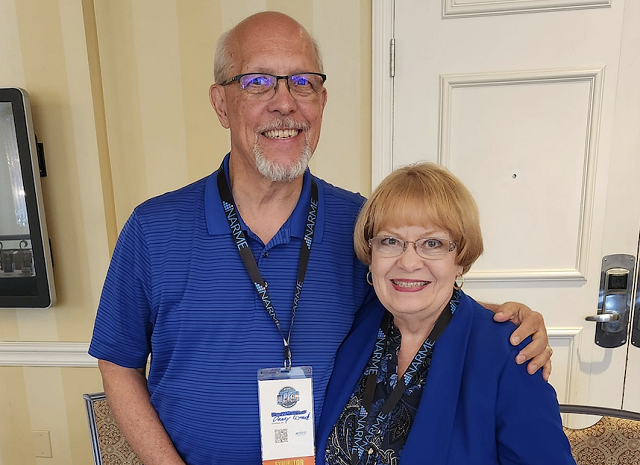Highlights
- We encourage students from all backgrounds to think about agency in all things. “You get to decide—your future is not yet written.” Post This
- Because the steps around the Success Sequence can be so unfamiliar to many students’ experience, we describe what stable families look like. Post This
- We find that most students are hungry to know how to make life work...They’re curious to know what steps to take to be successful, but no one else seems to be teaching them that. Post This
The Success Sequence is a simple framework for middle to high schoolers that provides very clear steps for success in life. Research shows that young people who complete at least high school, work full-time, and get married before having kids have a 97% chance of avoiding poverty as they move into adulthood. They are also significantly less likely to experience family breakdown and emotional distress as adults.
But sometimes these steps are easier said than done. The Success Sequence was developed with research from the American Enterprise Institute, the Brookings Institution, and the Institute for Family Studies (IFS). But how does this research work when translated from the think tank ivory tower to real life in the classroom? To answer that question, I spoke with Catherine Wood, CEO of Relationships Under Construction, an Ohio-based non-profit that is currently teaching the Success Sequence to tens of thousands of Ohio’s public and private school students as a component of their sexual health class.
Chris Bullivant: I wonder if you could start us off by telling me a little bit about the typical student you work with?
Catherine Wood: We work with a range of students from working class to high income, from inner-city areas that are often very poor to working in schools in suburban areas. Students range from 5th to 12th grade, but most are in 7th, 8th, and 9th. About 40% of our students in most schools come from married, intact families, though this rises for students in suburban areas. We find that most students are hungry to know how to make life work for them. They’re actually curious to know what steps to take to be successful, but no one else seems to be teaching them that—how does life actually work?

The Success Sequence covers a lot of life-stages. How do you break it down? And does it vary by age-group?
Yes, it’s a lot, but we find the students are able to grasp it. For example, in 6th grade we present this in a relatively simplistic way. We show little vehicles that zoom across the Powerpoint as goals. They reveal each one of the steps and then we discuss how to prepare to be successful by learning to serve our own family first. We learn about relationships in our family first. Serving our families teaches us how to serve others. Whether taking out the trash or cleaning up the dishes, we can find ways to serve our families.
That sounds good if you’re in a stable family home, but what about if you’re in an abusive home?
We’re quite big on personal agency in our classes. We help students identify the Six Big I’s of abusive relationships and we compare them to the Six Big Cs of healthy relationships. We teach that it is a parent’s responsibility to prepare a child in the first five years of life to get them ready to go to school. So that from the time they’re a toddler, they can carry dirty clothes to a hamper and trash to a trash can, etc. But many children arrive at school for kindergarten not knowing how to read or do simple tasks and haven’t arrived with a basic foundation on which to build a good education. This makes finishing the first step in the sequence of finishing high school more difficult.
When students realize that didn’t happen for them in their first five years, we encourage them to think “what do you want for your future children?” We can’t change anything that happened in the past, but we do get to choose what happens next. And students can learn to serve—even if their parents have a regular drug habit or are neglecting them in other ways. They can learn to clean and do simple chores to make their life better and feel better about themselves.
Get a high school education. Get a full-time job in your 20s. Get married and then have children.
With present abuse and trauma, we provide a trauma-informed introduction for every lesson. Coloring sheets, and markers and available, if students want to color while we are talking. We find they can listen better when coloring. And if a student tells you about abuse in their family, the classroom teacher and our instructors are mandatory reporters. The classroom teacher and the RUC Instructor take the child to a guidance counsellor who will alert the proper authorities. But in short, we say there are clear steps to achieving success. Get a high school education. Get a full-time job in your 20s. Get married and then have children. We encourage students from all backgrounds to think about agency in all things. “You get to decide—your future is not yet written.”

You say the Success Sequence works for students of all backgrounds? How does that work with students being raised by single parents in particular?
We provide students with some concrete goals that are recommended in the Success Sequence, such as accomplishing at least a GPA of 2.5, committing no crimes, getting a full-time job in your early 20s, get married and then have children. Because most kids have never heard this in real life. At least 47% plus of our students live in single-parent homes.
We love single parents, who are doing their very best, but it is just better if you can have two parents madly in love with their child—the stats show us that. But because the steps around the Success Sequence can be so unfamiliar to many students’ experience, we describe what stable families look like—those families that have married parents who are usually doing well. Students want to know what is possible.
We then explain that dropping out of high school is a half million-dollar decision. That is the wage gap between people with a high school diploma and those without—$9,516 (annual difference in pay according to US Bureau of Labor) over a 50-year career, is a half a million-dollar difference or $500k. We treat students as young adults, and give them the practicalities, so they can make informed decisions about their life.
How is this structured—are you all volunteers? How do you get into schools? And why you and not a teacher?
Relationships Under Construction (RUC) is one of the largest local providers in the state of Ohio, for implementing a Success Sequence curriculum. In Ohio there are 500,000 students we could teach. Our biggest cohort was back in 2005-2007 when our collaboration was able to teach over 250,000 students a year, but since COVID we have been low on funding. We are funded by Title V provision that is based on the poverty level of the state. RUC is currently teaching about 12,500-15,000 students in 32 counties across Ohio at the moment, covering about 30% of schools. Our collaboration, Ohio Adolescent Health Centers, consists of nine organizations in the state and together we reach around 65,000 students a year in 68 of our 88 Ohio counties.
Students deserve to be able to have the best shot at life, and a lot of this information empowers them and is transformative.
We don’t have volunteers, rather we have a paid team who are trained, and usually former teachers, nurses, or social workers, and they teach two to 8 classes a day depending on the size of the district.

We have tried having classroom teachers implement the curriculum before, but it often does not work well. Teachers and administration can feel very overwhelmed as it is, and when asked to teach our curriculum, which includes the Success Sequence, they may or may not give it the time needed. We’ve found that administrators and classroom teachers are very supportive of us and are grateful for outside speakers to come in and cover these sensitive topics. Administrators often tell us that attendance is the best when RUC is in the building. Classroom teachers tell us that other teachers notice a change in students’ behavior for weeks after RUC leaves. RUC is often in the building for five to 10 days at each grade level.
RUC requires that there are two adults in the classroom at all times with one being the RUC Instructor and the other being the classroom teacher. While our being there gives the teachers a bit of a break, they can also hear what is being said and often get answers to questions they have themselves. And then the teachers are on hand if there’s a problem or a fire drill.
How does this work in terms of the divide between church and state?
Well, we are not providing religious instruction nor is this presented as morality. It’s a simple presentation of research that shows students what works best. We are publicly funded by Title V grants presently, but this means funding fluctuates year by year because it is calculated by the poverty rate in the state, which can be different each year. As such, we are working on acquiring more private donors so we can continue working with students.
What motivates you to do this important work?
It is this power of transformation that motivates me. The students in classrooms deserve to be able to have the best shot at life, and a lot of this information empowers them and is transformative. Our take-home worksheets are not very brief. We put a bit more explanation in them so that the parent or guardian will also understand what their child is learning in class. It is very transparent. The worksheets help the family and educate them also. In schools, we like to offer support for life choices within the context of the whole family. This can save a world of pain and confusion later.

Family used to be the hub from which you would learn about relationships. My husband and I recently celebrated our 50th wedding anniversary. We repeated our ceremony again so that our grandchildren could anchor a moment in time when they saw that someone did get married and made it work. I think being able to see what works in practice is a big help for people, so that motivates me too.
Life can be a puzzle, and we just want to lay out all the pieces to the students. We can give a helpful hand on the issues they find difficult, but ultimately it’s up to them. My hope is they’ll have encountered at least one teacher in their life who has laid out the practical sequential steps that they can take to be successful in life and especially in relationships.

Pictured: Catherine Wood, Founder and President of Relationships Under Construction, with her husband of 52 years, Danny Wood.















